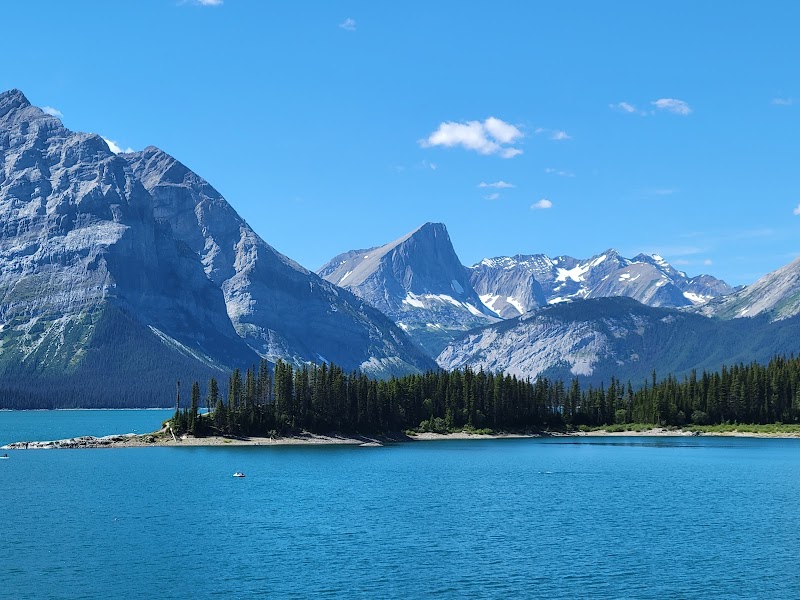
Winterfest Kaslo: Embrace the Frosty Adventure in British Columbia
Winterfest Kaslo offers a crisp adventure on the shores of Kootenay Lake, blending winter hiking, snowshoeing, and community celebration. Discover practical tips and trail insights to prepare for a genuine winter expedition that challenges and rewards across varied snowy terrain.
Layer Smart for Changing Conditions
Bring moisture-wicking base layers, insulating mid-layers, and a waterproof shell to adapt quickly to temperature shifts and wind exposure.
Footwear and Traction Devices
Wear waterproof hiking boots with good ankle support and pack microspikes or crampons for icy sections to maintain stable footing.
Stay Hydrated and Energized
Cold weather suppresses thirst but not your body's need for fluids—carry insulated water bottles and energy-dense snacks to maintain stamina.
Start Early to Maximize Daylight
Winter daylight hours are short; begin hikes early to enjoy full daylight and avoid tricky navigation in fading light or darkness.
Winterfest Kaslo: Embrace the Frosty Adventure in British Columbia
Kaslo’s Winterfest invites adventurers of all stripes to confront winter’s fierce edge with spirit and skill. Located on the shores of Kootenay Lake, the festival pulses at the heart of this small town, combining outdoor challenge with community warmth from early February through mid-March.
The main draw is the mix of winter hiking, snowshoeing, and cross-country skiing opportunities that thread through forested trails and open ridges around Kaslo. Trails vary in length and difficulty, often spanning 5 to 12 kilometers with elevation gains between 200 to 600 meters, pushing you to engage with the winter landscape as something alive—ice-laden branches that crackle underfoot, snowdrifts daring you to test your footing, and cold currents shaping the shape of the day.
The terrain ranges from packed forest paths brightened by bursts of snow-revealed moss and lichen to exposed summit points where the wind commands respect and views extend to the distant Selkirk and Purcell ranges. Each route demands sturdy footwear with good traction; crampons or microspikes frequently come into play depending on ice conditions. Hydration remains essential even in cold air, as the drier climate can stealthily sap your energy.
Plan your visit to start early in the day when the sun casts long shadows and the cold is sharpest, but the clarity of light reveals every frost-draped branch and snowflake. Afternoon brings a softened light and often a chance for calmer wind where post-hike town festivities thrive around bonfires, local food, and handcrafted wares.
Preparation is practical: dress in layers adaptable to shifting temperatures, carry snacks and water easily accessible without removing gloves, and be ready for changing weather—Kaslo winters are fiercely themselves. Local guides recommend a mix of winter hiking poles and reliable navigation tools as backcountry trails tend to be less groomed.
Winterfest isn’t just a hike; it’s an immersion into a winter world that beckons with challenge and camaraderie. Whether you’re pacing yourself on snowshoe trails or gliding through groomed cross-country routes, the experience is about embracing nature’s relentless vitality and emerging with both respect and exhilaration.
Nearby Trips
All Adventures
Boat Charters
Water Activities
Adventures near Kaslo, British Columbia
Discover the unique and memorable adventures that make Kaslo, British Columbia special.
Frequently Asked Questions
What types of trails are accessible during Winterfest Kaslo?
Winterfest offers a mix of snowshoeing, cross-country skiing, and winter hiking trails. Some are groomed, especially for skiing, while others remain natural and require careful navigation with traction gear.
Are there guided tours or is the event self-directed?
Both options exist. Local outfitters organize guided snowshoe tours and ski lessons, but many participate in self-guided explorations using marked trails and maps provided at the visitor center.
What wildlife might I encounter in Kaslo during winter?
You may spot white-tailed deer navigating forest edges, red foxes darting through snow, and birds like the gray jay that scavenge throughout the season. Tracks in the snow also reveal the presence of more elusive animals like pine martens.
How do I prepare for sudden weather changes during Winterfest?
Carry a weatherproof jacket, extra insulating layers, and keep a reliable portable GPS or map. Check local weather reports before heading out and inform someone of your planned route.
Is Winterfest family-friendly?
Yes, many activities cater to families, including shorter snowshoe trails and community events such as ice sculpting contests and bonfires that are enjoyable for all ages.
Are there any environmental restrictions to be aware of during Winterfest?
Visitors are encouraged to stay on marked trails to protect fragile winter vegetation and avoid disturbing wildlife during critical survival months. Pack out all trash and comply with local regulations regarding campfires and waste disposal.
Recommended Gear
Waterproof Winter Hiking Boots
Keeps feet dry and warm, provides ankle support on slippery terrain.
Microspikes or Crampons
Essential for maintaining traction on icy patches common during Winterfest trails.
Insulated Water Bottle
Prevents water from freezing and ensures hydration throughout the cold hike.
Layered Clothing System
Allows temperature regulation through base, insulating, and outer shell layers to respond to varying conditions.
Local Insights
Hidden Gems
- "Mineral Ridge viewpoint offers panoramic lake and mountain views with fewer crowds than main trails."
- "The abandoned Kaslo railway grades provide quiet winter paths with historic artifacts."
Wildlife
- "White-tailed deer"
- "Red foxes"
- "Gray jays"
- "Pine martens"
History
"Kaslo's roots extend to early mining and railway history, reflected in interpretive signs along certain trail sections that show the interplay between industrial past and wilderness preservation."
